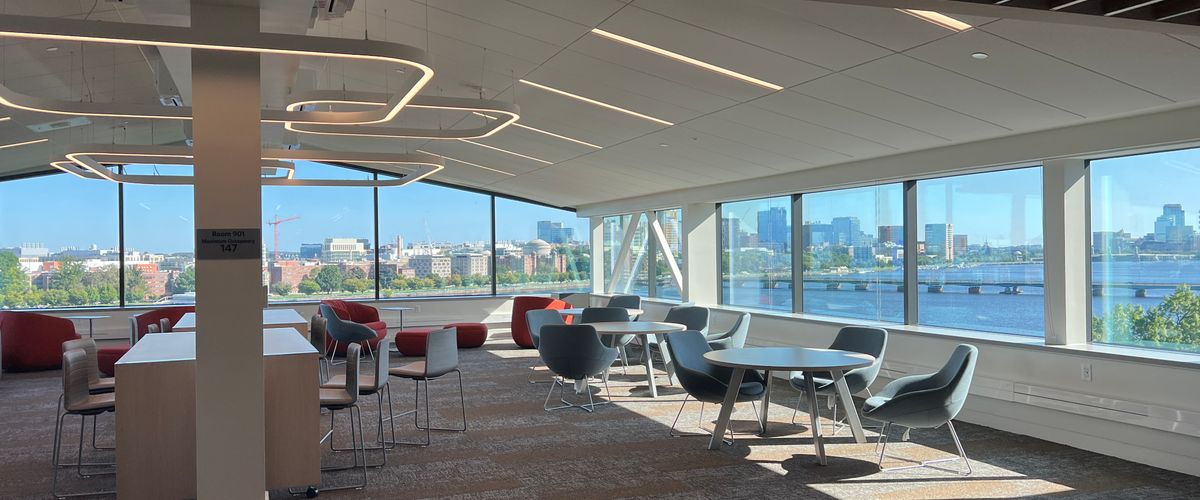Built as the Hotel Sheraton in 1923, Boston University bought the hotel in 1954 and converted it into a dormitory. Kilachand Hall's adaptive reuse is a prime example of the University's efforts to re-purpose existing buildings to maintain the community's historic character and preserve the embodied energy and carbon of these structures.
Renewable Energy and Energy Efficiency
- Solar panels on the roof produce 9,146 kWh of electricity per year, matching 9.08% of the electricity for the recently renovated 9th floor.
- The 9th floor of Kilachand Hall is designed to be more than 31% more efficient than a space that simply meets the energy code. This design includes renewable energy generated from an on-site solar array, an improved thermal envelope, high-efficiency glazing windows, reduced interior light power density, and occupancy controls.
- Lighting systems in Kilachand Hall consist of energy-efficient LED technology. LEDs last much longer than traditional lighting while using a fraction of the energy, helping reduce overall energy consumption compared to a typical building of this type.
- Occupancy and daylight sensors are used in offices, conference rooms, storage rooms, and custodial closets. To reduce energy consumption, sensors automatically turn down heating and cooling, and turn off lighting when spaces are unoccupied.
Water Efficiency
- Kilachand Hall uses water saving devices such as low-flow lavatories and faucets and water efficient toilets and urinals resulting in a 37% reduction in water use over a standard building.
Indoor Air Quality
- The space is designed to meet the ventilation requirements developed by a team of industry experts (ASHRAE Standard 62.1-2010). This ensures that each room is supplied with fresh and clean air at the ideal temperature and humidity.
- All janitorial spaces are equipped with ventilation systems to remove any indoor air pollutants. Existing resident bathrooms were provided with new exhaust as a part of this project.
- Boston University uses low VOC materials in all its projects. Materials in this building have been specifically selected to ensure healthy air quality during construction and occupancy.
- At Kilachand Hall, custodial staff use 100% Green Seal and Ecologo-certified cleaning products and procedures. Using these products minimizes the exposure of guests and maintenance personnel to potentially hazardous chemical, biological, and particulate contaminants.
Social Equity
- The 9th Floor of Kilachand Hall continues Boston University's efforts toward diversity and social equity by providing communal space for innovative educators, scholars, and health and biomedical sciences leaders. The BU School of Medicine, Education, Advising & Mentoring In STEM (BEAMS) is a youth pathway to health careers program that aims to recruit, develop, and retain underrepresented youth from Boston and other areas of Massachusetts in post-secondary STEMM (science, technology, engineering, math, and medicine) education in an ongoing effort to diversify the healthcare workforce.
Profile
91 Bay State Road, Boston, MA 02215
LEED Rating: Gold
Total Project Area: 9,654 gsf.



